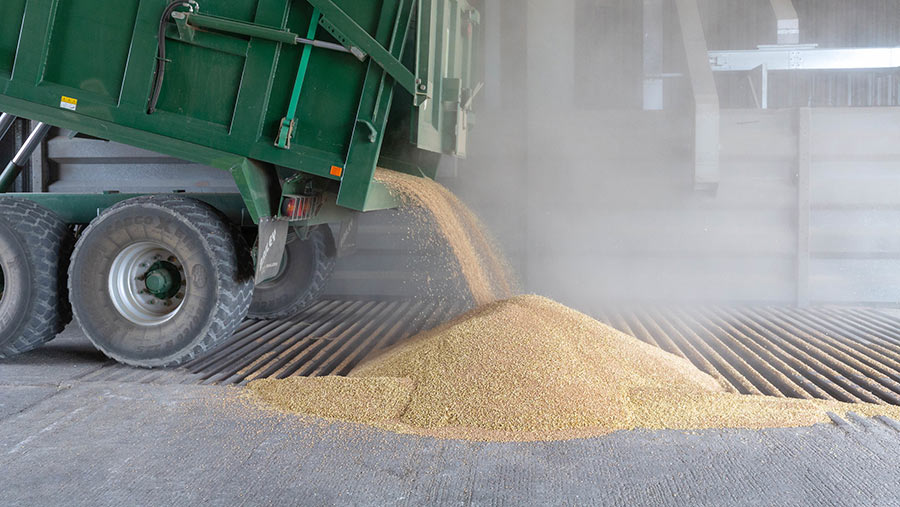Grain prices fall to less than half of 2022 peak
 © Tim Scrivener
© Tim Scrivener Market fundamentals have driven feed wheat prices down to £160/t in the past week, falling to less than half of where prices peaked 12 months ago.
Well-supplied global markets and limited demand are creating a bearish outlook for arable prices into the new crop year.
UK feed wheat futures for the July 2023 contract closed at £170/t on 30 May, with prices having fallen by £191/t in the past year since peaking at £361/t on 16 May 2022.
See also: Wheat markets fall to £190/t on news of grain deal extension
Spot prices collected by Farmers Weekly averaged £160.63/t for feed wheat and £238.67/t for milling wheat on 31 May.
Zoe Andrew, grain trader at Frontier, said fundamentals were driving the market at present, rather than politics, with a large supply of old-crop wheat putting pressure on prices.
“Current stock-to-use ratios mean stock is building in some of the major exporting countries,” she added.
Demand is slower due to the lack of activity in the ethanol market and there is weak demand from the poultry sector due to avian influenza having reduced the flock, said Ms Andrew. Lower demand from China is also weighing on markets.
Black Sea deal
The extension of the Black Sea grain deal until mid-July has helped to remove some volatility from the market, at least in the short term.
However, Russia is insisting it will not extend the deal again in July if its demands are not met.
Crops in many central and eastern European countries, such as France and Romania, are faring well, according to the EU Commission.
However, droughts in Spain and Portugal will have some effect on production in those countries.
In the UK, a period of relatively warmer weather is forecast, which is likely to push crops to mature and come to market earlier.
Grain traders say this could lead to a huge exportable surplus.
Latest UK supply-and-demand estimates
The total availability of wheat for 2022-23 is up 7% on the previous year at 18.58m tonnes, according to the AHDB’s latest UK cereals estimates.
Total cereals demand for animal feed is down 742,000t on the year to total 12.4m tonnes for 2022-23.
Animal feed demand remains low for pigs and poultry. Tighter margins for dairy producers and improved forage availability are also limiting cattle feed requirements.
The levy board’s report says cereal inclusions in animal feed rations remain down on the year. However, with grain prices falling in recent months, the contrast to the relative price of protein meal has become less stark.
Cereals use by the human and industrial sector is up by more than 120,000t on the year, estimated at 10.5m tonnes.
Commercial end-of-season stocks for wheat are estimated at 2.44m tonnes – 32% higher than the previous year.
